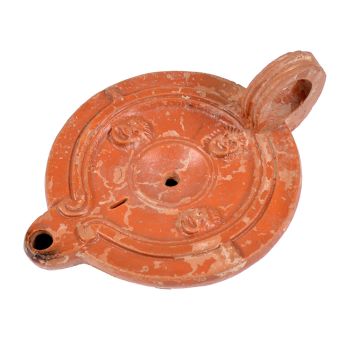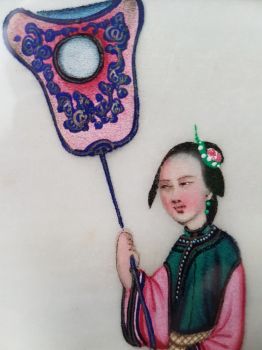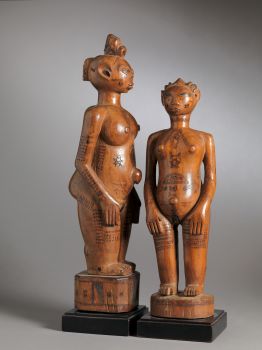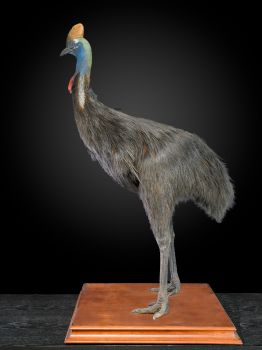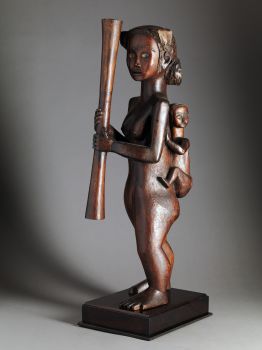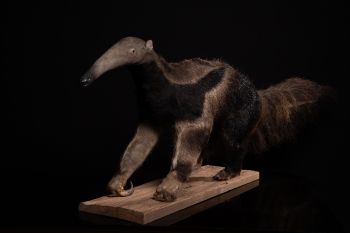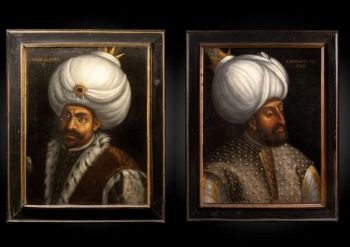Mendi Ceremonial Headdress, Western Highlands, Papua New Guinea. 1930 - 1950
Unknown artist
€ 18.000
Spectandum Gallery
- About the artworkWig with headdress “kelep” from Southern Highlands province, Mendi Valley Tribes. Hat-shaped headdress made of dark human hair and rattan, bark and bast fiber structure. The headdress is topped with a ratan structure covered with bird feathers. Polished Kina and Nassa clam shells are used as ornaments. In Papua New Guinea the practice of body adornment is known as bilas and celebrates the intrinsic interconnection of people to all things living. Over millennia, different forms of bilas have emerged, fulfilling varied everyday physical, social, and spiritual needs in unique ways. Made from an array of natural resources including shells, feathers and plant fibers, some adornments signify power or prestige, others are for cultural celebrations and ceremonial purposes.There is no better place to experience first-hand the relationship between New Guinea Highlanders and birds than at a Highlands SingSing, a traditional dance ceremony. Previously SingSings were held as part of special ceremonial feasts; today SingSings have a more contemporary impetus, being staged for regional competitions, national holidays or Christian celebrations. SingSings feature elaborately decorated men and women dancing, chanting, and playing traditional musical instruments. A wide range of Highlands people and their costumes and dances can be experienced at the Highlands Shows, held in Goroka and Mount Hagen. Dancers, each representing his or her own clan or tribe, converge on these competitive events, which last several days. The dancers offer a broad sampling of the variety of human decoration featuring bird plumes that one encounters in the Highlands of New Guinea. Using the same basic materials, each society has developed a distinct aesthetic by which it defines beauty. It is this range of interpretation of the connections between humans and birds that makes Highlands decoration fascinating, underscoring as it does the basic human desire for variety and the appreciation of beauty that unites us all.
- About the artist
It might happen that an artist or maker is unknown.
Some works are not to be determined by whom it is made or it is made by (a group of) craftsmen. Examples are statues from the Ancient Time, furniture, mirroirs, or signatures that are not clear or readible but as well some works are not signed at all.
As well you can find the following description:
•“Attributed to ….” In their opinion probably a work by the artist, at least in part
•“Studio of ….” or “Workshop of” In their opinion a work executed in the studio or workshop of the artist, possibly under his supervision
•“Circle of ….” In their opinion a work of the period of the artist showing his influence, closely associated with the artist but not necessarily his pupil
•“Style of ….” or “Follower of ….” In their opinion a work executed in the artist’s style but not necessarily by a pupil; may be contemporary or nearly contemporary
•“Manner of ….” In their opinion a work in the style of the artist but of a later date
•“After ….” In their opinion a copy (of any date) of a work of the artist
•“Signed…”, “Dated….” or “Inscribed” In their opinion the work has been signed/dated/inscribed by the artist. The addition of a question mark indicates an element of doubt
•"With signature ….”, “With date ….”, “With inscription….” or “Bears signature/date/inscription” in their opinion the signature/ date/ inscription has been added by someone other than the artist
Are you interested in buying this artwork?
Related artworks
- 1 - 4 / 12
- 1 - 4 / 9






